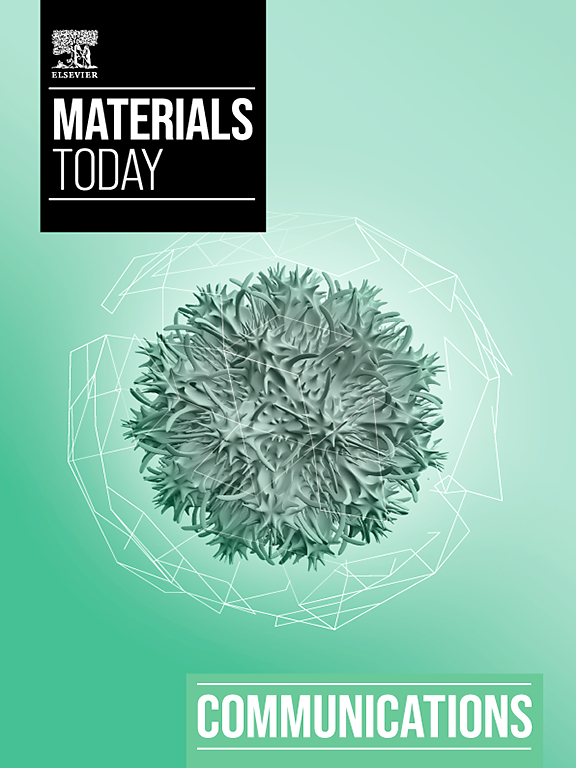钴铁氧体修饰的碱性溶液纳米纤维 Ti3C2Tx MXene 活化过氧单硫酸盐体系高效降解四环素:机理分析与途径
IF 4.5
3区 材料科学
Q2 MATERIALS SCIENCE, MULTIDISCIPLINARY
引用次数: 0
摘要
在降解四环素的过程中,磁性 CoFeO 纳米粒子作为过一硫酸盐(PMS)的活化剂受到了广泛关注。然而,如何构建具有良好分散性和高暴露活性位点的 CoFeO 复合材料仍是一项挑战。在此,我们采用静电自组装方法开发出了由钴铁氧体纳米颗粒装饰的 KOH 纤维功能化 MXene 基质(称为 CoFeO@Alk-MXene)。层状纤维结构有效地分散和固定了钴铁氧体纳米颗粒,增加了反应位点的暴露。利用碱化 MXene 的优异导电性和过渡金属原子的高效活化,制备的 CoFeO@Alk-MXene 材料通过活化 PMS 在 10 分钟内快速去除 100% 的盐酸四环素(TC-HCl)。实验和理论分析表明,Ti/Ti、Co/Co 和 Fe/Fe 的电子传递过程以及复合材料吸附 PMS 后产生的自由基和非自由基攻击行为是实现快速去除污染物的主要机制。基于这些发现,提出了一种全面的降解机制和潜在途径。总之,CoFeO@Alk-MXene/PMS 是一种很有前景的去除三氯甲烷的催化体系。本文章由计算机程序翻译,如有差异,请以英文原文为准。
Efficient degradation of tetracycline by cobalt ferrite modified alkaline solution nanofibrous Ti3C2Tx MXene activated peroxymonosulfate system: Mechanism analysis and pathway
Magnetic CoFeO nanoparticles have received considerable attention as an activator for peroxymonosulfate (PMS) in the degradation of tetracycline. However, it is still challenging to construct CoFeO composites with good dispersion and highly exposed reactive sites. Herein, the KOH fiber-functionalized MXene matrix decorated by cobalt ferrite nanoparticles (denoted as CoFeO@Alk-MXene) was developed by electrostatic self-assembly method. The layered fibrotic structure effectively disperses and fixes cobalt ferrite nanoparticles, increasing the exposure of reactive sites. The as-prepared CoFeO@Alk-MXene material exhibited rapid removal of 100% tetracycline hydrochloride (TC-HCl) within 10 minutes by activating PMS, leveraging the excellent conductivity of alkalized MXene and the efficient activation of transition metal atoms. The experimental and theoretical analysis revealed that the electron transfer process of Ti/Ti, Co/Co and Fe/Fe, as well as the free radical and non-free radical attack behaviors produced by the adsorption of PMS by the composite, are the primary mechanisms for achieving rapid removal of pollutants. A comprehensive degradation mechanism and potential pathways were proposed based on these findings. Overall, CoFeO@Alk-MXene/PMS emerges as a promising catalytic system for TC removal.
求助全文
通过发布文献求助,成功后即可免费获取论文全文。
去求助
来源期刊

Materials Today Communications
Materials Science-General Materials Science
CiteScore
5.20
自引率
5.30%
发文量
1783
审稿时长
51 days
期刊介绍:
Materials Today Communications is a primary research journal covering all areas of materials science. The journal offers the materials community an innovative, efficient and flexible route for the publication of original research which has not found the right home on first submission.
 求助内容:
求助内容: 应助结果提醒方式:
应助结果提醒方式:


